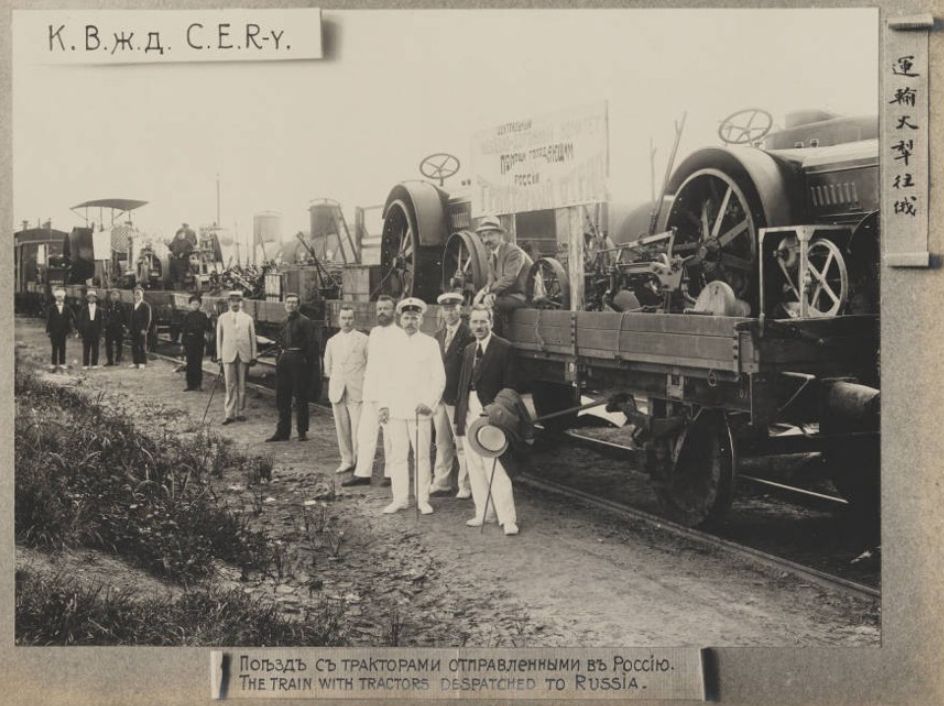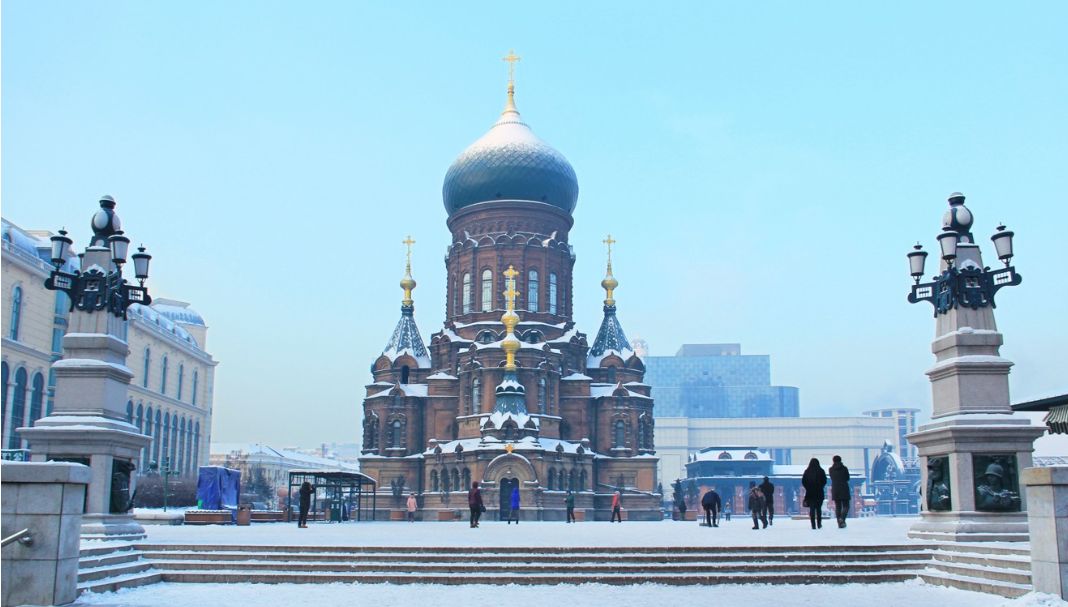Harbin is the capital
of Heilongjiang province but for the first three decades of the 20th century,
however, Harbin was effectively a Russian city.
The region of Harbin
remained largely rural until the 1800s, with over ten villages and about 30,000
people in the city's present-day urban districts by the end of the 19th
century. Then a Polish engineer Adam Szydłowski drew
plans for the city following the construction of the Chinese Eastern Railway,
which the Russian Empire had financed.

Long before it became
the capital of Heilongjiang province, Harbin was a fishing and hunting
settlement of Manchuria, whose inhabitants, the Manchus, had a history of
conquering and being conquered by China. More than a century ago, vast and
mineral-rich Manchuria became the locus of a three-way power struggle between
China, Russia and Japan.
After the
Sino-Japanese war of 1895, tsarist Russia obtained a concession from China’s
weak Qing dynasty to build the China Eastern Railway (CER) as a short cut
linking two Russian cities: Chita, in Siberia, and the far eastern port of
Vladivostok. The route, however, meant traversing northern Manchuria via
Harbin.
The Russians selected
Harbin as the base of their administration over this railway and the Chinese
Eastern Railway Zone. The railways were largely constructed by Russian
engineers and indentured workers. The Chinese Eastern Railway extended the
Trans-Siberian Railway: substantially reducing the distance from Chita to
Vladivostok and also linking the new port city of Dalny (Dalian) and the
Russian Naval Base Port Arthur (Lüshun). The
settlement founded by the Russian-owned Chinese Eastern Railway quickly turned
into a "boomtown," growing into a city within five years. The
majority of the Russians who settled in Harbin came from southern Russia, and
the dialect of Russian spoken in Harbin was derivative of the dialect of
Russian spoken in Odessa. In addition, there were many Ukrainians, Jews, Poles,
Georgians, and Tatars.
From the start, it
was a highly controversial project because the great powers of the time
suspected Russia of using the railway to control large parts of Manchuria. They
were right, of course. Borrowing from British treaty ports, Russia claimed
extraterritorial rights for the zone covered by the CER, putting it outside
Chinese jurisdiction and making it Russian territory, not only for railway
employees but also for hundreds of thousands of travelers and settlers, Russian
and foreign, within the zone. As a result of its enormous influence, the CER
would be the cause of several major conflicts over the next half-century.

The city was intended
as a showcase for Russian imperialism in Asia and the American scholar Simon
Karlinsky who was born in Harbin in 1924 into a Russian Jewish family wrote
that in Harbin: "the buildings, boulevards, and parks were planned—well before
the October Revolution—by distinguished Russian architects and also by Swiss
and Italian town planners", giving the city a very European appearance.
Starting in the late 19th century, a mass influx of Han Chinese arrived in
Manchuria, and taking advantage of the rich soils, founded farms which soon
turned Manchuria into the "breadbasket of China" while others went to
work in the mines and factories of Manchuria, which become one of the first
regions of China to industrialize. Harbin became one of the main points through
which food and industrial products were shipped out of Manchuria.
Japan viewed Russia’s
eastern expansion with alarm, and the CER was a casus belli for the
Russo-Japanese conflict in 1905. A rising power, the Japanese shocked the world
by defeating the Russians both on land – in the battle of Mukden, which
involved 600,000 combatants – and at sea, when the Russian fleet famously
sailed halfway around the world from its Baltic base, only to be sunk in the
Tsushima Strait.
Russia’s defeat cost
it the Liaodong Peninsula and the Japanese took over the CER line between
Changchun and Port Arthur, renaming it to the South Manchuria Railway. Although
some Russians returned home after this major setback, many more kept arriving. By
1913, Harbin was an established Russian colony with a population of nearly
70,000 people, most of the Russian or Chinese descent.
he White Russian Army
ran the Russian part of the CER from 1917 to 1924, and many in the Russian Harbintsy community, which by the 1920s numbered about
120,000, thought their lifestyle would last forever. They were wrong. The
Soviet Union was established on December 30, 1922, and China officially
recognized the Soviet government two years later. Old Russian passports were
now invalid and Harbin’s Russians who had no wish to become Soviet citizens
were rendered stateless.
The Soviets renounced
imperialist territorial claims but took control of the CER. In a pact that
would have consequences for Aleksandrov, it was agreed with the Chinese that
the CER would employ only Soviet and Chinese citizens. By this time, the
Chinese were also taking over Harbin institutions, including the police, courts
and post office. In 1929, Chinese warlord Zhang Xueliang
captured the CER, but Soviet troops intervened to restore the status quo.
In September 1931,
Japan invaded Manchuria, establishing a base in Mukden, about 550km south of
Harbin. Then in February 1932 their troops overcame Chinese resistance to take
Harbin. The city’s White Russians initially welcomed the Japanese, who had been
Western allies in the first world war and had sent troops to Manchuria in 1917
to defend the White Russians against the Reds. But things had changed. The
Japanese established a claim to the territory they now called Manchukuo. They
wanted to control the whole CER and, in 1935, the Soviets sold the rest of the
line to them. In return, Japan arranged for 20,000 CER employees and their
families, including 13,000 from Harbin, to return to Russia. Foreign business
in Harbin shrank as the puppet state of Manchukuo became isolated
internationally and the Japanese tightened their grip on the local economy.
Poverty was rife, especially among the Chinese. Prostitution was rampant across
nationalities.
It did not help that
the Songhua River flooded Harbin twice in the 30s, causing epidemics and
collapsing infrastructure. Most horrific of all, as we saw during a visit to
the War Crimes Museum in the Pingfang district,
starting in 1934 the Japanese Army’s Unit 731 built a biological and chemical
warfare research and development unit that performed vivisection on live
humans. Over a decade, they would subject at least 3,000 men, women, and
children to experiments that included freezing them or injecting them with
bubonic plague. Most of those killed at Unit 731 were Chinese, but they also
included Soviet Russians, Mongolians, Koreans and Allied prisoners of war.
“Plague bombs” developed at Unit 731 and affiliated units were dropped on the
Chinese throughout the second world war, and resulting cholera, anthrax and
plague killed hundreds of thousands of civilians.
The city as it exists
today still shows St Sophia Cathedral, built-in 1907 and a focal point for
orthodox Russians closed during the Cultural Revolution in 1997 it was
converted into a museum:

For updates click homepage here